 December 12, 2019 John E. Ross, KD8IDJ, Editor
| ||||||
FCC Amending Amateur Radio RF Exposure Safety Rules The FCC is amending its Part 97 Amateur Service rules relating to RF exposure safety. In a lengthy document in ET Docket 19-226 released on December 4 and addressing a broad range of RF safety issues, the FCC said current amateur radio RF exposure safety limits will remain unchanged, but that the amateur-specific exemption from having to conduct an RF exposure evaluation will be replaced by the FCC's general exemption criteria. Radio amateurs have always had to comply with RF exposure limits, but certain stations have been exempt from having to conduct evaluations based only upon power and frequency. "For applicants and licensees in the Amateur Radio Service, we substitute our general exemption criteria for the specific exemption from routine evaluation based on power alone in Section 97.13(c)(1) and specify the use of occupational/controlled limits for amateurs where appropriate," the FCC said. "The sky is not falling here," ARRL Lab Manager Ed Hare, W1RFI, commented. "The major aspects of the rules will not impose major new burdens on the Amateur Radio Service. As in all regulatory matters, though, the devil may be in the details, so the ARRL technical staff, legal staff, and the experts on the ARRL RF Safety Committee are carefully evaluating this FCC document." Under the revised Section 97.13(c)(1), "In lieu of evaluation with the general population/uncontrolled exposure limits, amateur licensees may evaluate their operation with respect to members of his or her immediate household using the occupational/controlled exposure limits in Section 1.1310, provided appropriate training and information has been accessed by the amateur licensee and members of his/her household," the amended rule says.
"RF exposure of other nearby persons who are not members of the amateur licensee's household must be evaluated with respect to the general population/uncontrolled exposure limits. Appropriate methodologies and guidance for evaluating Amateur Radio Service operation is described in the Office of Engineering and Technology (OET) Bulletin 65, Supplement B," the revised rule concludes. The FCC said it was not persuaded by ARRL's argument in its comments that the routine evaluation exemption for amateur radio stations operating below a certain power threshold should be maintained. "Amateur radio licensees operate a variety of installations of different size, power, and frequency, which can be located in close proximity to people, giving rise to various RF exposure concerns," the FCC noted. In a meeting with FCC OET Chief Julius Knapp and senior staff in early November, ARRL asked the FCC to make available on the internet a calculator to facilitate making the correct calculations the rules require. ARRL said that would be preferable to unofficial third-party calculators, the results from which might not be accorded the same degree of deference in local disputes. Several software programs were suggested as models. The FCC did not single out amateur radio in drafting its latest RF exposure rules. The rules affect multiple services, and exemptions for many other services were also deleted as part of a broader policy driven by a proliferation of RF devices, some resulting in situations where gain antennas are sited much closer to people than was expected in 1996 when the rules were last revised. ARRL Asks FCC to Dismiss Petition Seeking Declaratory Ruling on Encoded Message Rule ARRL has asked the FCC to dismiss a Petition for Declaratory Ruling filed by New York University (NYU), that in ARRL's view proposes a new interpretation of the rule -- Section 97.113(a)(4) -- prohibiting "messages encoded for the purpose of obscuring their meaning." In its December 2 filing, ARRL said NYU's call to "clarify" the rule's meaning to prohibit "effectively encrypted or encoded messages, including ARRL pointed out that the FCC rule prohibiting "messages encoded for the purpose of obscuring their meaning," is essentially the same as what appears in the International Telecommunication Union (ITU) Radio Regulations applying to all countries. ARRL made clear that it continues to support rules prohibiting encrypted messages on the amateur bands, even for limited emergency communication purposes, and the ARRL Board reiterated that opposition last July. In its comments, ARRL said that NYU's request that the FCC adopt its suggested language would introduce ambiguity and confusion in the application of a rule that's clearly understood to prohibit encrypted messages. ARRL noted that Morse code is encoded and would fall within the prohibition as proposed by NYU. "The very fact that messages sent in CW are 'encoded' by any definition of the term starkly demonstrates the problem with this proposal," ARRL said. ARRL said that adding the word "effectively" would make the definition even more vague by including all encoded messages plus an additional set of undefined messages, the extent of which is unknown. Similarly, ARRL maintained, it is "unclear and undetermined what the petitioner may mean by 'effectively encrypted.'" Encryption is a binary proposition, ARRL pointed out, and the meaning either is hidden from all but the intended recipient(s) or it is not; a message cannot be considered "encrypted" if the means to enable non-recipients to understand the message are generally available. "The Commission has addressed amateur use of digital signals in multiple proceedings [and] there has been no showing that the current regulatory scheme is deficient in prohibiting encrypted messages," ARRL concluded. "Adding the modifier 'effectively' to 'encrypted' converts clear meaning into vague uncertainty," ARRL asserted. FCC rules explicitly authorize radio amateurs to use new digital techniques on the condition that the techniques be described adequately and available publicly, ARRL said, pointing to multiple filings in the FCC record from individuals who have successfully used the public descriptions to decode the digital techniques with which NYU has expressed concern. NYU has not presented any information to demonstrate that the FCC's current rule is not being complied with by digital innovators, ARRL said, and adoption of NYU's petition would create more questions for the FCC than it would be able to answer if called upon to apply the petition's vague language in specific cases. "We are unaware of any enforcement case in which the Commission is experiencing difficulty in understanding and applying the prohibition against encrypted messages," ARRL maintained. What the petitioner regards as violations "augurs against its proposal to interpret in some new fashion the international and domestic prohibition," ARRL said. "For example," ARRL continued, "the petitioner asserts, without any basis in fact, that dynamic compression techniques effectively encrypt or encode communications." Such techniques are widely recognized ways to increase the efficiency of digital transmissions," ARRL noted that comments in the record clearly state that signals using dynamic compression are being decoded by third-party listeners. "The Commission has addressed amateur use of digital signals in multiple proceedings [and] there has been no showing that the current regulatory scheme is deficient in prohibiting encrypted messages," ARRL concluded. "To the contrary, adoption of the petitioner's proposals would add confusion -- rather than clarity -- and diverge from the international consensus on prohibiting encrypted messages while fostering vibrant experimentation with digital techniques." A 600 W Broadband HF Amplifier Using Economically Priced LDMOS Devices Razvan Fatu, M0HZH/YO9IRF, has designed and built a 600 W broadband HF amateur radio amplifier that uses a pair of low-cost MRF300 LDMOS (laterally diffused metal-oxide semiconductor) MOSFET devices. LDMOS devices are widely used in RF power amplifiers. Fatu's model A600, now at version 1.2, was designed to demonstrate the capabilities of MRF300s as linear broadband devices in the 2 - 50 MHz range.
"To achieve the target of 600 W output while also minimizing the level of even-number harmonics, a push-pull configuration of two transistors is used," he explains. "Luckily, the manufacturer made it easy to design the PCB layout for such a thing by offering two versions -- the MRF300AN and MRF300BN -- that have mirrored pinouts." The individual transistors are specified at 330 W output and come in a TO-247 package, with the source connected to the tab. The recommended supply range is 30 - 50 V dc. "By studying the specifications, it looks like with correct broadband matching and some operational safety margin, we can get close to 600 W output at a voltage of around 45 V across a reasonably large bandwidth; the aim is to cover 1.8 to 54 MHz," Fatu said. "Main challenges when designing this amplifier are related to achieving good input and output matching over the entire frequency range as well as maintaining high and flat gain. Good linearity and a low level of harmonic products are mandatory. As the TO-247 is not a package specifically designed for high-power RF, there are some challenges with thermal design and PCB layout as well."
The circuit uses a 4:1 transformer at the input. He used surface-mount devices wherever possible, to minimize stray inductance, and designed the circuit board power traces to be thick enough to support the high current. Traces also were sized for the right trace impedance where possible, he explained. Fatu installed an intermediary 3-millimeter-thick copper plate between the transistors and the aluminum heatsink. He used a liquid metal product called Galinstan which, he said, offers exceptional thermal and electrical conductivity and doesn't require much pressure to achieve best performance. During testing, he found that the amplifier will put out about 580 W at 3.7 MHz and works most efficiently in the higher bands. "The highest output power I've measured was 840 W in the 10-meter band, but the wave was distorted and the harmonic levels were high," Fatu said. He has posted a video in addition to an online article. The Doctor Will See You Now! "VHF/UHF Propagation" is the topic of the current (December 5) episode of the ARRL The Doctor is In podcast. Listen...and learn!
ARRL The Doctor is In features your host, QST Editor-in-Chief Steve Ford, WB8IMY, and the Doctor himself, Joel Hallas, W1ZR, discussing a broad range of technical topics. Enjoy ARRL The Doctor is In on Apple iTunes, or by using your iPhone or iPad podcast app (just search for ARRL The Doctor is In). You can also listen online at Blubrry, or at Stitcher (free registration required, or browse the site as a guest) and through the free Stitcher app for iOS, Kindle, or Android devices. If you've never listened to a podcast before, download our beginner's guide. NOAA/NASA Panel Concurs that Solar Cycle 25 will Peak in July 2025 The NOAA/NASA-co-chaired international Solar Cycle Prediction Panel has released its latest forecast for the coming Solar Cycle 25. The panel's consensus calls for a peak in July 2025 (±8 months), with a smoothed sunspot number of 115. The panel agreed that Cycle 25 will be of average intensity and similar to Cycle 24. The panel additionally concurred that the solar minimum between Cycles 24 and 25 will occur in April 2020 (±6 months). If the solar minimum prediction is correct, this would make Solar Cycle 24 the seventh longest on "Solar Cycle 25 may have a slow start, but is anticipated to peak with solar maximum occurring between 2023 and 2026, and a sunspot range of 95 to 130. This is well below the average number of sunspots," the panel said last spring, adding with "high confidence" that Cycle 25 "should break the trend of weakening solar activity seen over the past four cycles." The panel said the expectation that Cycle 25 would be comparable in size to Cycle 24 suggests that the steady decline in solar cycle amplitude seen from Cycle 21 through Cycle 24 has ended and that there is no indication of an approaching "Maunder-type" minimum. Cycle 24 peaked in April 2014 with an average sunspot number of 82. The Solar Cycle Prediction Panel forecasts the number of sunspots expected for solar maximum, along with the timing of the peak and minimum solar activity levels for the cycle. It is comprised of scientists representing NOAA, NASA, the International Space Environment Services, and other US and international scientists. The K7RA Solar Update Tad Cook, K7RA, Seattle, reports: Spaceweather.com says that Wednesday, December 11, was the 28th consecutive day of no sunspots. To date in 2019, 77% of days had no sunspots. Compare this to the previous solar minimum: In 2008, 73% of days were spotless, and in 2009, 71% of days had no sunspots. The average daily solar flux for the December 5 - 11 reporting week was 70.7, up marginally from the previous week's 70.2.
As was the case in last week's bulletin, the predicted solar flux is 70 on each of the next 45 days -- until January 25. The predicted planetary A index is 5, 8, and 8 on December 12 - 14; 5 on December 15 - 17; 12 on December 18; 10 on December 19 - 21; 5 on December 22 - January 4; 8 on January 5; 5 on January 6 - 8; 8 on January 9 - 10; 5 on January 11 - 13; 12 on January 14; 10 on January 15 - 17, and 5 on January 18 - 25. Sunspot numbers for December 5 - 11 were 0, 0, 0, 0, 0, 0, and 0, with a mean of 0. The 10.7-centimeter flux was 70.7, 70.3, 70.2, 71.6, 70.7, 70.6, and 70.7, with a mean of 70.7. Estimated planetary A indices were 3, 4, 2, 3, 4, 4, and 6, with a mean of 3.7. Middle latitude A index was 1, 2, 1, 2, 2, 2, and 3, with a mean of 1.9. A comprehensive K7RA Solar Update is posted Fridays on the ARRL website. For more information concerning radio propagation, visit the ARRL Technical Information Service, read "What the Numbers Mean...," and check out K9LA's Propagation Page. A propagation bulletin archive is available. Monthly charts offer propagation projections between the US and a dozen DX locations. Share your reports and observations. Just Ahead in Radiosport
See the ARRL Contest Calendar for more information. For in-depth reporting on amateur radio contesting, subscribe to The ARRL Contest Update via your ARRL member profile email preferences. Collegiate QSO Party 2018 and 2019 Plaque Recipients Announced The ARRL Collegiate Amateur Radio Initiative has announced plaque winners from the 2018 and 2019 rounds of the Collegiate QSO Party. They are:
W1RMC Middlebury College Amateur Radio Club, 2019 First Place, High Power; W8LT Student Radio Club of The Ohio State University, 2019 First Place, Low Power, and KN4WZX Augusta University Amateur Radio Club, 2019 Second Place, Low Power. Thanks to organizers Andy Milluzzi, KK4LWR, and Tony Milluzzi, KD8RTT. The plaques are sponsored by ARRL and the W1YSM Snyder Family Collegiate Amateur Radio Endowment Fund, established in 2017. The Collegiate QSO Party will return in September 2020. Melissa Pore, KM4CZN, is 2020 Carole Perry Educator of the Year Award Recipient Melissa Pore, KM4CZN, of Vienna, Virginia, is the 2020 recipient of the Carole Perry Educator of the Year Award, Orlando HamCation has announced. The award, which recognizes outstanding contributions in educating and advancing youth in amateur radio, was first awarded last year to its namesake, Carole Perry, WB2MGP, in honor of her work teaching students about ham radio. Pore is an Amateur Radio on the An educational professional for more than 20 years, Pore is on the staff at Bishop Denis J. O'Connell High School in Arlington, Virginia, the site of a November 2018 ARISS contact. In addition to teaching engineering and computer science, she is involved in the school's amateur radio and engineering clubs. While she was a teacher at St. Thomas More Elementary School, Pore was associated with the STMSAT-1 project. The Earth-observation CubeSat, built entirely by students at the school, was launched in 2015 but failed to transmit any images. It was the first satellite constructed by elementary schoolers. Pore was a cofacilitator of a workshop at the 2019 Space Port Area Conference for Educators. Last year, she and her students presented during Innovation Day at National Air and Space Museum's Steven F. Udvar-Hazy Center. She is a member of AMSAT and the NASA Goddard Amateur Radio Club. As an ambassador for the ARISS Education Team, her talks and educational outreach have showcased ARISS and the STEM activities of her students, several of whom are radio amateurs. She assisted with the Dayton Hamvention 2019 ARISS booth and helped staff the exhibit at the Space Explorers Education Conference last February in Houston, where she's set to present a workshop in 2020. At the 2019 Space Port Area Conference for Educators at Cape Kennedy, Pore received a plaque from the ISS National Lab Space Station Explorer Program citing her "service, commitment, and desire to push the boundaries of STEM Education." In Brief...
Upcoming ARRL Section, State, and Division Conventions
Find conventions and hamfests in your area.
. .
Subscribe to...
Free of charge to ARRL members...
| ||||||
.jpg) The Commission indicated that, by and large, if an RF source was "categorically excluded" from routine evaluation under the old rules, it will most likely still be exempt under the new rules, which are expected to take effect in the next couple of months.
The Commission indicated that, by and large, if an RF source was "categorically excluded" from routine evaluation under the old rules, it will most likely still be exempt under the new rules, which are expected to take effect in the next couple of months..JPG)
 messages that cannot be readily decoded over the air for true meaning," is not only vague but could weaken the prohibition against encryption.
messages that cannot be readily decoded over the air for true meaning," is not only vague but could weaken the prohibition against encryption..jpg) "The announcement of the MRF300 and MRF101 transistors by NXP in 2018 has generated quite a spark of interest in the amateur radio community, and as soon as I learned about them, I wanted to get some on my workbench," Fatu said. He has entered his project in the NXP Homebrew RF Design Challenge 2019.
"The announcement of the MRF300 and MRF101 transistors by NXP in 2018 has generated quite a spark of interest in the amateur radio community, and as soon as I learned about them, I wanted to get some on my workbench," Fatu said. He has entered his project in the NXP Homebrew RF Design Challenge 2019.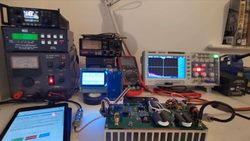
 Sponsored by
Sponsored by 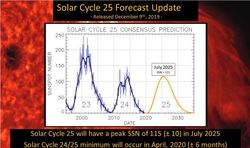
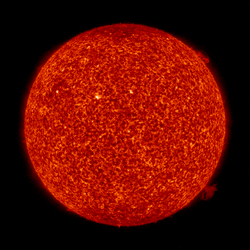 At the bottom of the solar cycle, hardly any geomagnetic activity occurs, with average daily planetary A index at 3.7 and average middle latitude A index at 1.9. This is very quiet and is favorable to propagation on 160 meters.
At the bottom of the solar cycle, hardly any geomagnetic activity occurs, with average daily planetary A index at 3.7 and average middle latitude A index at 1.9. This is very quiet and is favorable to propagation on 160 meters..JPG) K4FAU
K4FAU 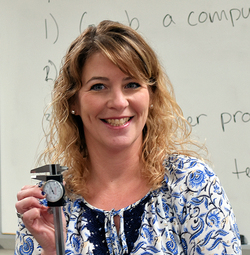 International Space Station (
International Space Station ( The theme for the 2020
The theme for the 2020 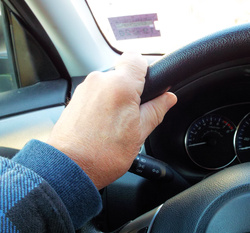 Massachusetts has settled on a one-hand-on-the-wheel rule for mobiles. The Bay State's two ARRL Section Managers report they have received confirmation that the Commonwealth's distracted driving law does not apply to two-way mobile radio operation. The new law "permits use of a federally licensed two-way radio, provided that one hand remains on the steering wheel at all times," except as provided in sections 8M, 12A, and 13B of the law. -- Thanks to Western Massachusetts SM Ray Lajoie, KB1LRL, and ARRL Eastern Massachusetts SM Tom Walsh, K1TW
Massachusetts has settled on a one-hand-on-the-wheel rule for mobiles. The Bay State's two ARRL Section Managers report they have received confirmation that the Commonwealth's distracted driving law does not apply to two-way mobile radio operation. The new law "permits use of a federally licensed two-way radio, provided that one hand remains on the steering wheel at all times," except as provided in sections 8M, 12A, and 13B of the law. -- Thanks to Western Massachusetts SM Ray Lajoie, KB1LRL, and ARRL Eastern Massachusetts SM Tom Walsh, K1TW .JPG) The Boy Scouts say JOTA station participation was up in 2019. The Scouts
The Boy Scouts say JOTA station participation was up in 2019. The Scouts 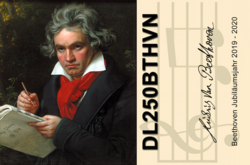 A year-long special event will honor Beethoven. German special event station
A year-long special event will honor Beethoven. German special event station 







